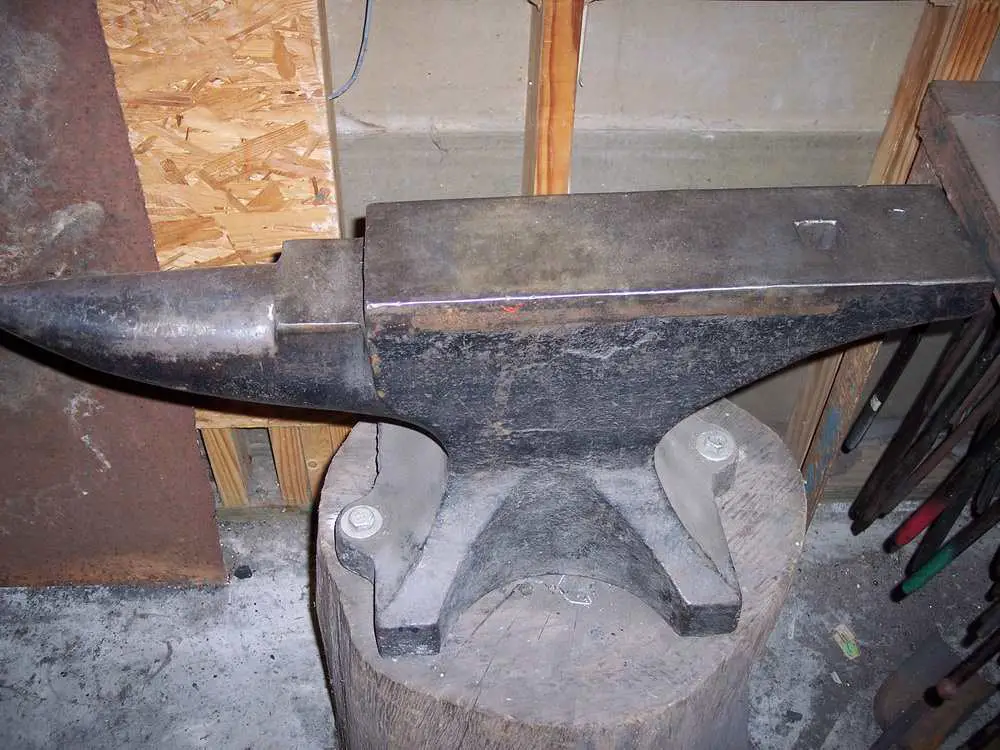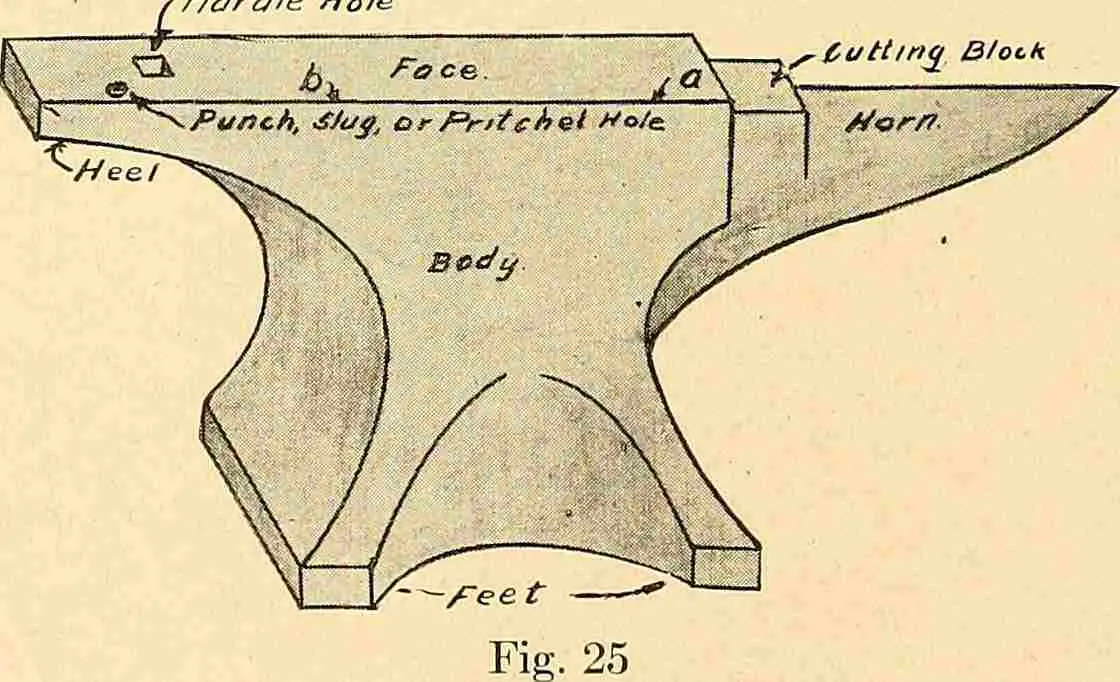
Why New Anvils Are Expensive
For the most part, blacksmithing is a fairly cheap hobby. It’s possible to get a piece of stock, a hammer, and a forge-setup for less than 100$. The only real sore spot is the anvil, with many anvils selling at $3/lb or more. This begs the question: “Why the hell are anvils so expensive?”
Here is a preview:
- Few Companies Make Anvils
- Manufacturing and Design Concerns When Casting Steel
- Shipping & Handling Anvils Is A PITA
1. Few Companies Make Anvils
I’ll be upfront and state that I think this is possibly the biggest reason that new anvils are so expensive. While I believe blacksmithing is rising in popularity, it’s still a very niche hobby. I would imagine many companies have never even considered manufacturing anvils, and if they have, most probably assume the demand for them is not high enough for it to be worth their while.
This means that a lower supply of anvils is produced. It also means that many people in smaller countries will not have access to a domestic supplier, and countries that do have a domestic supplier, may be dealing with a monopoly/oligopoly situation.
It’s always possible to buy an anvil overseas, but that has its headaches as well.
This means the companies that DO go through the hassle of manufacturing anvils, are allowed by market forces to charge very high rates.
2. Manufacturing and Design Concerns When Casting Steel
Another reason that new anvils are expensive, is that they must be made out of a tough, impact resistant material. Cheap grey cast iron is way too brittle for the abuse that an anvil will be expected to endure, and building anvils out of wrought iron like the olden days is too uneconomical.
Therefore, manufacturers must use higher quality but more expensive materials.
In addition to having slightly more expensive raw materials, the process of casting higher quality (tough) steels is more laborious. Melting cast steels requires higher temperatures, which complicates nearly every step of the casting process. These higher temperatures increase the reactivity of steel with oxygen, and they limit the number of usable materials in the casting molds.
There is a lot of upside to these new cast steels. Newer anvils made out of cast steel are significantly better than the old wrought iron anvils – at least from a utility perspective. That being said, many people, myself included, love the aesthetic of the older anvils.
So while these newer materials do increase manufacturing costs, we get a significantly better product. Still, this plays a role in the cost of anvils.
3. Shipping & Handling Anvils Is A PITA
Shipping things overseas seems daunting, but it’s actually fairly cheap to ship something overseas in a shipping container. The real cost comes from handling. Getting the anvil from the port to the customer is an expensive process, and it adds to the cost of buying new anvils.
Things can be complicated (and made more expensive) by international trade laws. Tariffs can increase costs as well.

Why Old Anvils Are Expensive
A quick preview:
- There Is A Limited Supply Of Old Anvils (duh)
- Many Old Anvils Were Broken Or Scrapped
- Shipping & Handling Anvils Is Still A PITA
4. There Is A Limited Supply Of Old Anvils (duh)
Just like new anvils, a big reason for the increase in price of old anvils is a low (and constant) supply. So while demand for antique anvils goes up as blacksmithing increases in popularity, the supply of old anvils remains the same.
And in my opinion, the demand is going up. People are buying blacksmithing anvils for all sorts of reasons. Some like them as stylish antiques, some people want them for actual smithing, and some like owning a piece of technological history.
And it is an interesting piece of a technological history. Old anvils are made of either two materials, cast iron and wrought iron. Cast iron anvils tend to be the newer old anvils. They were revolutionary in that they were very cheap…but they are kind of crap anvils, as they are too brittle for smith work. Still, many farms had a small cast iron stake anvil that they could use for field repairs.
The wrought iron anvils are much more coveted, as they are not brittle like the cast iron anvils. These anvils were made by forge welding multiple separate pieces of the anvil together. They have a nice ring, but can be easily damaged by miss-hits.
The point is, there are a lot of collectors out there who have anvils sitting in a warehouse/garage somewhere gathering dust. This further lowers the supply of buyable antique anvils.
5. Many Old Anvils Were Broken Or Scrapped
Old cast iron anvils had a tendency to fracture. These fractures were difficult to repair, and it was usually uneconomical to repair them. Therefore many old cast iron anvils got thrown out or scrapped once they broke.
Wrought Iron anvils were very easy to damage as they are much softer than modern anvils, but they were easier to repair. Sadly, many of these got melted down for scrap during past conflicts such as WW2. This means that even though anvils were a common tool found in every community, many did not survive to modern times.
6. Shipping & Handling Anvils Is Still A PITA
I’ll admit that the internet has made me lazy. I now get kind of irritated when things can’t be shipped directly to my house. It’s possible to find old anvils online and have them be shipped to you, but I guarantee you that you will pay for the convenience.
If you want to buy an old anvil, the cheapest solution is to hoof it yourself. I suppose you could make the argument that this is expensive too, as it takes you away from work but…collecting is enjoyable, and I don’t know many people that would rather work than hunt down a beautiful old anvil.
Conclusion
Anvils can be one of the most expensive tools (besides maybe a power hammer) that a blacksmith will own. If you are a beginner smith, it may seem like an insurmountable obstacle to obtain an anvil…
But it’s not, my advice is to not overthink it. Find a ASO(anvil shaped object), or check out my guide on finding your first anvil where I walk through some of the options on amazon.
Anvils are a beautiful and timeless tool with a rich history. Getting your first anvil is like a right of passage, a right of passage that enables you to join a brotherhood of craftsman going back thousands of years. If you are looking for an anvil, good luck, and happy smithing!